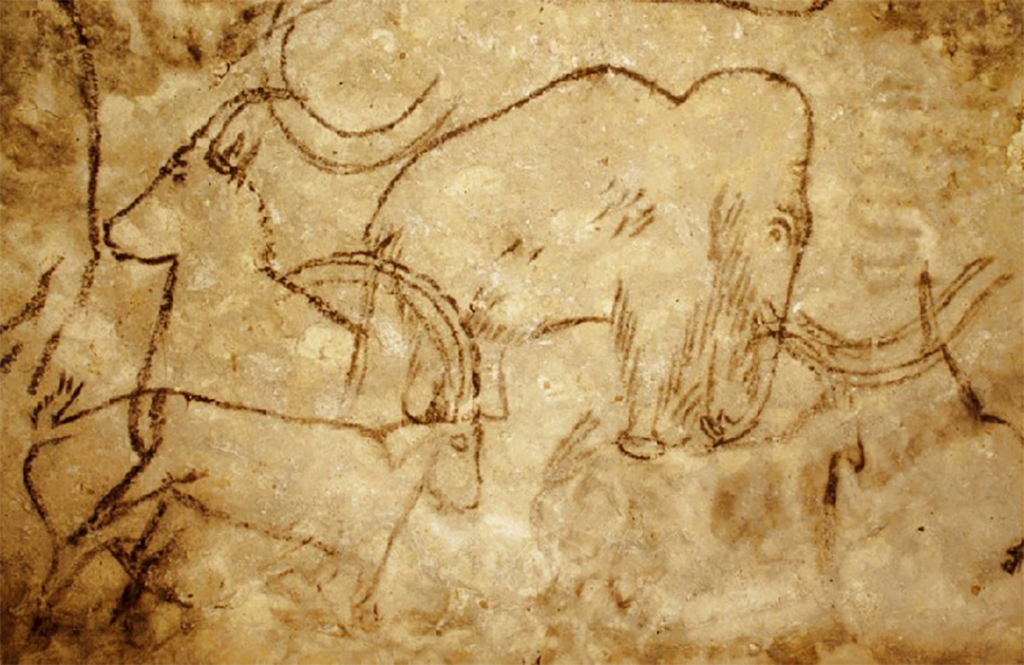Protein de-extinction: How Neanderthals and mammoths could help find new antibiotics
By Matt Field | November 16, 2023
 Prehistoric art from Roufignac Cave in France depicting a mammoth and other creatures.
Prehistoric art from Roufignac Cave in France depicting a mammoth and other creatures.
The United Nations estimates that by 2050 10 million people a year could die because antibiotics will no longer effectively treat their infections. That would be a dramatic increase from the more than a million who died in 2019. Many recommended drugs are now ineffective at treating bacterial disease in children. But even as the world faces a growing “superbug” problem, few new antibiotic drugs are trickling on to the market. The ones that do can quickly become susceptible to the same bacterial defenses that undermined their predecessors, sometimes within a year of being released.
There’s a big reason for the dearth of new antibiotics: A key strategy for maintaining drug effectiveness requires antibiotics to be used judiciously. Drug makers, therefore, have little economic incentive to invest in new products that will see only sparing use, and so, few major companies are still in the antibiotic business. Another problem: The handful of antibiotics that have become available in recent years are similar to ones that already exist; for the most part, they don’t represent new classes of medicines. Bacteria resistant to one type of antibiotic can also develop resistance to the newer, related substances.
To find more effective drugs, researchers have taken to looking in some seemingly unusual places, including Komodo dragon blood, bacteria used by some ants, and the human nose. At the University of Pennsylvania, bioengineer Cesar de la Fuente is on an even more esoteric hunt. Like other scientists, he’s looking for antibiotics in animals and humans. But unlike Komodo dragons and ants, De la Fuente has been probing species that last walked the Earth thousands of years ago.
A new antibiotic frontier? Nestled within the genetic codes for the complete set of proteins in an organism (the proteome) are the instructions for smaller, protein-like molecules called peptides. Researchers are interested in peptides in part because they can have strong antibiotic effects. To that end, De la Fuente and his team have been developing artificial intelligence (AI) systems to quickly “mine” vast reams of protein data in the hunt for promising molecules. In a 2021 paper, they described using AI to scan the proteomes of modern humans, turning up more than 2,600 antibiotic peptides. Since then, De la Fuente has expanded his search area.
In a recent paper, he looked at ancient humans, including Neanderthals, our stocky pre-historic relatives who lived throughout Europe and Western Asia for hundreds of thousands of years. Though derided as cave-dwelling brutes, Neanderthals engaged in advanced tool-making, art, and burials of the dead. Research over the years has narrowed a perceived intellectual chasm with modern humans; De la Fuente wondered whether Neanderthals also had tools harbored in their genes that could prove useful to modern medicine.
“The basic premise that we have in the lab is that we think that bringing back molecules from the past can help us address present day problems such as antimicrobial resistance,” De la Fuente said.
De la Fuente’s team mined the proteomes of Neanderthals and Denisovans, another ancient hominin that lived around the same period, but in Asia. Thanks to Nobel laureate Svante Pääbo, who sequenced the genomes of both species, researchers can now analyze their proteomes.
De-extinction. Modern humans arrived in Europe over 40,000 years ago, possibly overlapping with the Neanderthals there for several thousand years. While no one is certain how the Neanderthals or Denisovans went extinct between 40,000 and 30,000 years ago, perhaps it was competition with our species, climate change, or inbreeding.
Jurassic Park fantasies aside, De la Fuente’s work probably represents the most serious scientific effort to bring ancient humans—or at least their molecules—back to life. He calls his research “molecular de-extinction.”
Pointing out a plastic model of a Neanderthal protein that contained a peptide with antimicrobial properties, De la Fuente said, “As far as we know, that sequence is not present anywhere in [current] biology. But by using chemistry, we can actually make it. … And so when we were about to resurrect it, that was a thrilling moment from a scientific standpoint.”
He and his team used an AI system to find what he terms “encrypted peptides,” molecules contained within larger proteins, synthesizing a subset of them. Peptides in hand, they tested them to assess their antimicrobial strength, experimentally infecting mice and treating them with both modern and ancient human molecules.
The ancient peptides didn’t prove to be that effective, De la Fuente said. While they reduced the infection in a skin infection test, they were “bacteriostatic” when injected into sick mice—that is, they prevented a worsening of the infection, but didn’t end it. The study was a proof of concept, De la Fuente argues, that shows the ancient proteome can be mined and synthesized for drug discovery or other insights. Other scientists agree.
“I think this technique will augment other antibiotic discovery efforts to help us discover structurally and functionally novel antibacterial therapies that overcome existing resistance mechanisms,” Jonathan Stokes, a biochemistry professor at McMaster University, told Vox.
Last month, De La Fuente’s team published a pre-print describing how they mined the proteins of every extinct organism for which there are records. This was more successful than the ancient human project, and De la Fuente found peptides he is considering studying further to see if they have potential to one day be treatments. The pre-print reported that peptides from the wooly mammoth, Darwin’s ground sloth, and a prehistoric elephant—all extinct species—were as effective as a standard, approved antibiotic in treating mice.
“The next step, what we’re thinking about is maybe creating a startup around some of these concepts,” De la Fuente said.
Aided by AI, the work of “mining the tree of life” could proceed rapidly. Mining the entire complement of extinct proteomes took De la Fuente’s AI about 24 hours, he said. (More ancient proteomes have been added to public databases since the project, however.) De la Fuente said his team recently mined almost 90,000 microbial genomes.
“If you think about the traditional antibiotic pipeline or any drug discovery pipeline, it takes three to six years to come up with one or two exciting preclinical candidates. Right now, using AI, we can identify thousands or hundreds of thousands of candidates in hours,” De la Fuente said. “We now can flood the pipeline with preclinical candidates. So then hopefully one or two of those, or three, will make it eventually into the clinic.”
Even if De la Fuente’s work turns up impressive peptides with strong antibiotic potential, that would represent only a partial victory. Between 2017 and 2021, just 12 new drugs came on the market. As of last December, there were 62 antibiotic medicines in clinical trials, according to an article in Nature. At that same point, 230 COVID vaccine candidates were in trials. Similarly, in 2020, more than 1,300 cancer drugs were in trials or awaiting US government review. Few new antibiotics under investigation end up in pharmacy shelves. Perhaps just 1.5 percent of potential antibiotics under pre-clinical investigation (the stage before human trials) eventually win regulatory approval.
World governments have been exploring new ways of funding antibiotic development. The United Kingdom recently began a so-called “Netflix” approach in which the government is paying companies for access to drugs for a specified amount of time. Various entities are working to incentivize the full development of new medicines.
De la Fuente said the problems of the antibiotic development sector stem partly from not “thinking outside of the box for many decades.” Just maybe, outside of the box thinking means looking outside even our own geological epoch, as De la Fuente has been doing. Perhaps the ancient creatures of the Pleistocene have solutions to at least one of the great problems of the Anthropocene.
Together, we make the world safer.
The Bulletin elevates expert voices above the noise. But as an independent nonprofit organization, our operations depend on the support of readers like you. Help us continue to deliver quality journalism that holds leaders accountable. Your support of our work at any level is important. In return, we promise our coverage will be understandable, influential, vigilant, solution-oriented, and fair-minded. Together we can make a difference.
Keywords: AI, antibiotic resistance
Topics: Biosecurity















